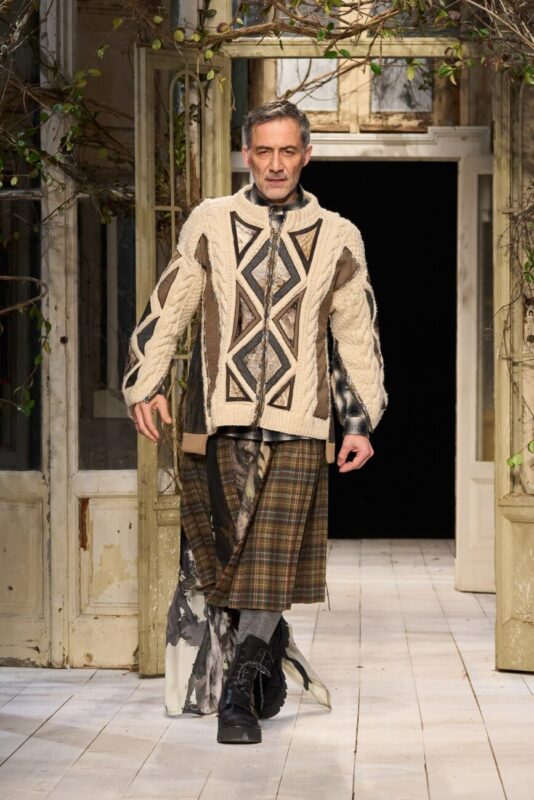Fashion isn’t always about garments. A jacket might seem like just a jacket at first glance, but when placed within a narrative, it becomes a powerful symbol. In Milan, we witnessed collections comprised “only” of clothing, and collections that carried forward a storyline. The most prevalent theme was female self-determination. Designers drew inspiration from queens, heroines, warriors – modern vestal virgins disrupting an order. They assert themselves with force, carving out space. Yet, obstacles are always around the corner, and the risk is falling into a system that, after liberating, entraps once more. It’s at this juncture that fashion performs its most difficult magic trick, bringing forth a story shouted in silence.
Silent spells are the most potent
Words Domenico C
Antonio Marras
“Eleonora!” The exclaimed start from actor Filippo Timi opens Antonio Marras’s runway show in search of Eleonora D’Arborea, the last sovereign – Judicissa of Sardinia, who lived between the 1300s and 1400s. D’Arborea is regarded as a true heroine of the island. Marras drew inspiration from her and her avant-garde spirit (she authored the Carta de Logu, a legal text with civil and criminal laws, legislating even on rape and reparative marriage). Marras begins with D’Arborea’s independence and rebellion to create a couture collection referencing medieval attire yet is hyper-contemporary. The designer’s knights and ladies wear embroidered brocades, floral-patterned damasks, black and white or red and black checks. The imagery evokes the Middle Ages, amidst painted and gold leaf-smeared wools, devoré velvets, rose voiles, chiffons, laces, and embroideries. However, Eleonora D’Arborea’s story is more relevant than ever, and to convey this, Marras incorporates portholes, deep cuts, and dangling threads. A bridal gown with a large leaf headdress and a cage over the face concludes the show.
For this autumn-winter, Antonio Marras urges us to seek our inner Eleonora because we all need to be reborn. And the only way to do so is by embracing the last vestiges of strength.
Luisa Spagnoli
On the other hand, Luisa Spagnoli’s autumn-winter collection originates from the atmospheres of the film “A Man and a Woman,” Claude Lelouch’s romantic film from 1966, which tells the story of a man and a woman who meet after respectively losing their spouses and decide to fall in love again. The story is set in Deauville, and Nicoletta Spagnoli brings to the runway a work of marine-inspired designs celebrating the typical French allure. Deauville is represented in tailored blazers with gold buttons, navy blue sweaters, and wide capes reminiscent of high-ranking officers. The military world serves as inspiration for Spagnoli, who presents long coats, safari jackets, and jackets with clean, masculine cuts. The brand’s emblematic knitwear is showcased in small tops with wide sleeves, culottes, sports polo shirts, and cardigans with deep back necklines. Nicoletta Spagnoli brings Deauville’s charm to Milan, reinterpreted in a modern key with accessories like rubber boots, ballerinas, and wool socks.












